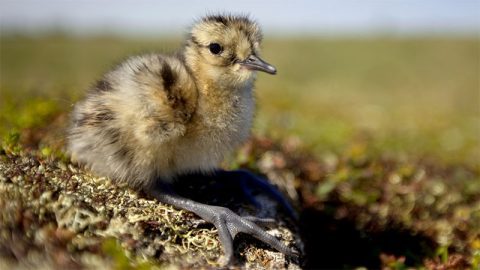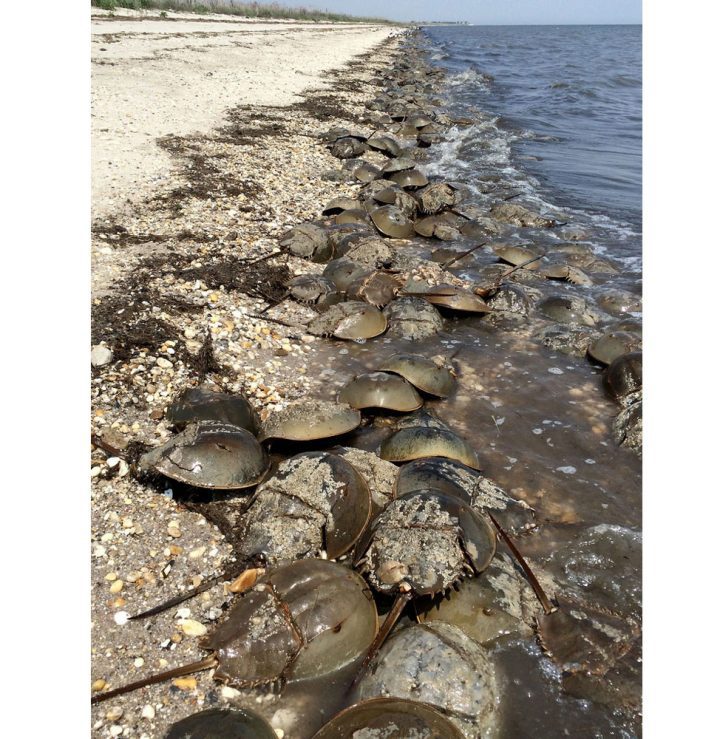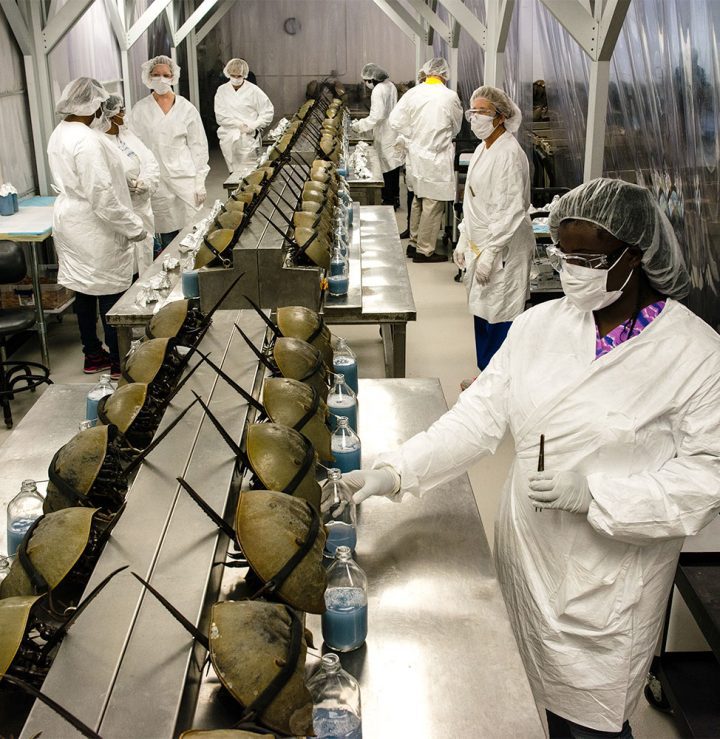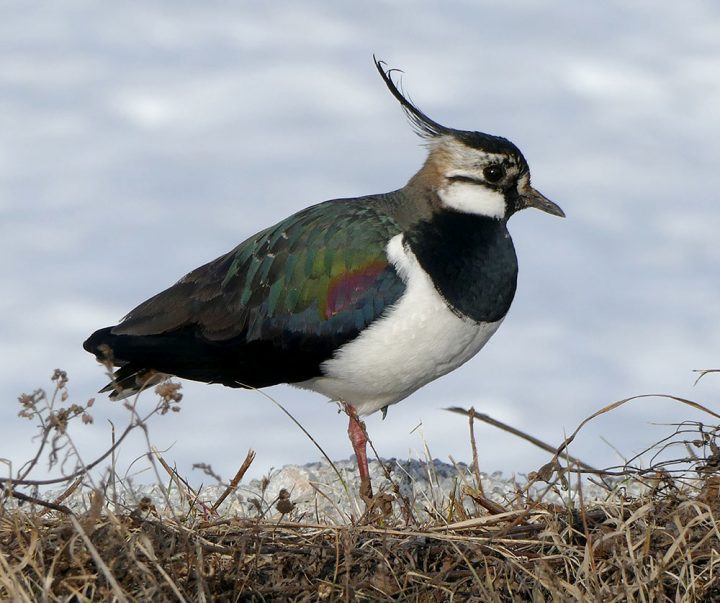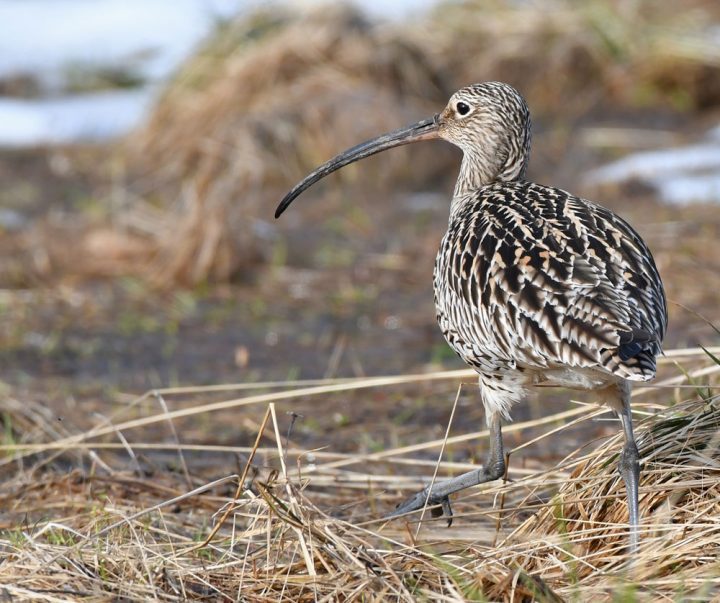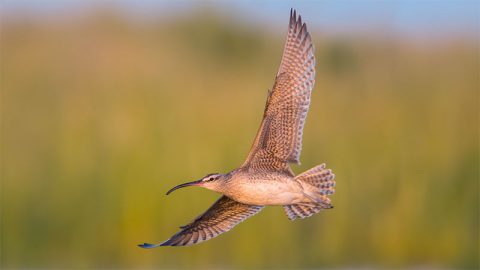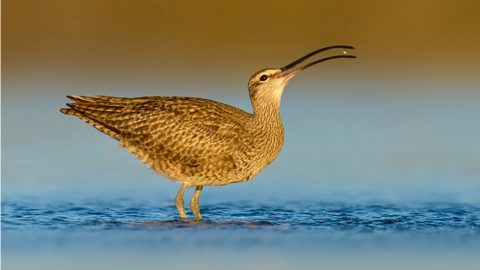Losing Ground: What’s Behind the Worldwide Decline of Shorebirds?
By Scott Weidensaul
Semipalmated Sandpiper in Massachusetts. Photo by Andy Johnson. September 19, 2018From the Autumn 2018 issue of Living Bird magazine. Subscribe now.
It is hard to imagine a more altered, manipulated landscape than the one that stretches south from the industrial city of Tangshan, on the Yellow Sea coast of China. More than 100 square miles of former tidal flats have been converted into an endless expanse of salt-making ponds, known as the Nanpu Saltpans—an industry with roots here that stretch back a century or more. But rarely has seawater been evaporated into salt on such an immense scale, an area the size of Tampa.
An equal area of “reclaimed” land— what was once coastal mudflat habitat, walled off from the sea and transformed for industrial purposes—now holds a haphazard mix of chemical factory smokestacks, power-plant cooling towers, wind turbines, manufacturing complexes, half a dozen prisons, and an oil drilling and storage facility. It’s a weird mix of factoryscape, briny ponds, and immense mountains of gray-white salt, all part of a massive, half-finished industrial and port complex called the Caofeidian New Area. A partially constructed highway—six lanes of gravel and incomplete paving—runs through the middle. At barely 5 a.m., the road is already rumbling with heavy machinery.
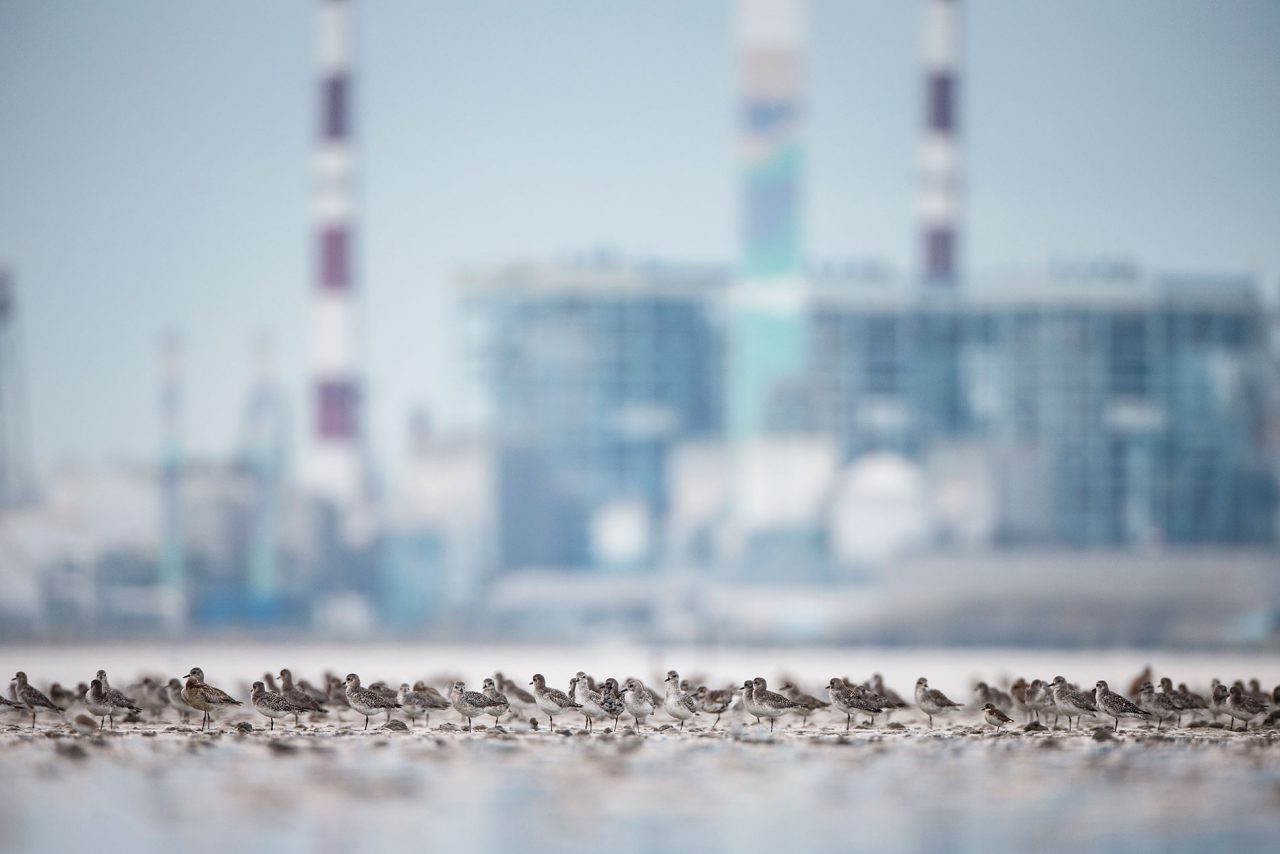
The sun is rising through the low pall of smog and dust that overhangs this region, but Dr. Theunis Piersma is looking away from Nanpu into Bohai Bay, where the high tide has begun to pull back from the seawall on which he stands. The receding water exposes gray mudflats that will, at low ebb, stretch for miles offshore—a tiny fragment of what were once among the largest tidal flats in the world. And on the mud, shorebirds are now gathering, first by the hundreds, then by the thousands, and soon by the tens of thousands—wave after wave of knots and stints, godwits and turnstones, Terek and Curlew Sandpipers, flying in from their high-tide roosts among the salt ponds, clouds of birds arriving to feed and preen.
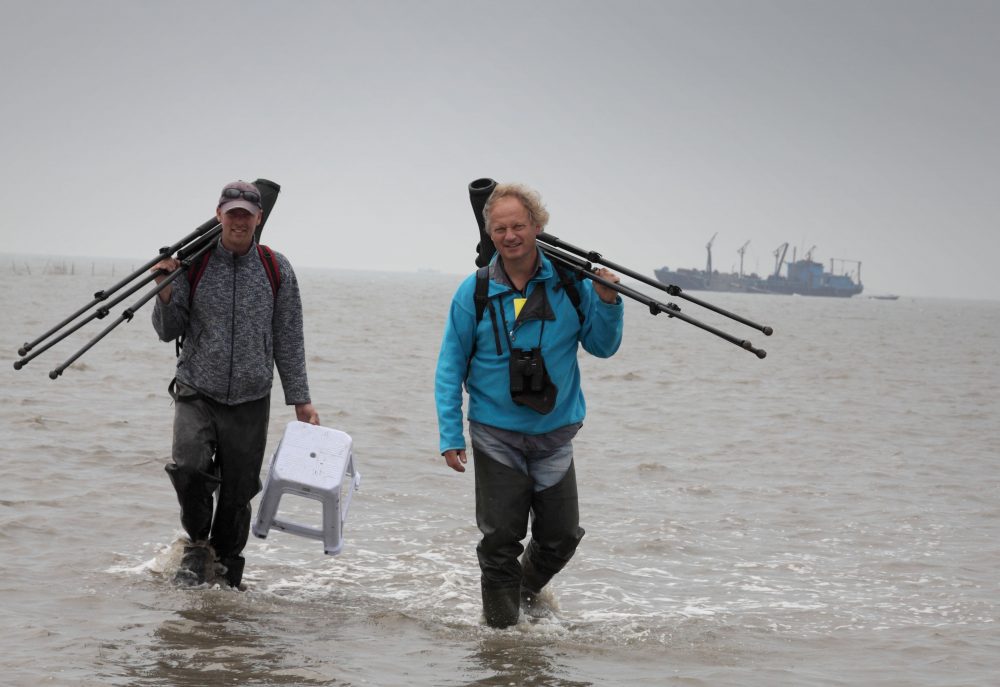
These flats and the multitudes of shorebirds they attract have drawn Piersma to this part of eastern China for more than a decade. The Dutch scientist from the University of Groningen is a legend in the shorebird world. A nimbus of Piersma’s gray, curly hair blows in the breeze as he trains his spotting scope on a flock feeding on the mud below us—a richly colored subspecies of the Red Knot named in his honor: Calidris canutus piersmai. Like dozens of other species of shorebirds, these knots undertake some of the longest migrations of any bird in the world, hemispheric journeys made possible only by this midpoint pit stop of food-rich mudflats along the Chinese and Korean coasts of the Yellow Sea. Here, shorebirds like the knots that have just flown nearly 4,000 miles nonstop from Australia or New Zealand can rest and refuel before continuing on epic flights to the Siberian Arctic or Alaska.
The almost incomprehensible level of coastal destruction along the Yellow Sea, of which Caofeidian is just one example, has thrown this global migratory system into grave peril. The numbers of Red Knots, Great Knots, Black-tailed and Bar-tailed Godwits, and many other species have been in freefall for years. Some, like the Spoon-billed Sandpiper and Nordmann’s Greenshank, are among the most critically endangered birds in the world. So Piersma comes to China every spring to join an international team of researchers with a uniquely somber mission—to document, he says, the extinction of some of the world’s greatest migratory shorebirds.
Those birds may have received an eleventh-hour reprieve last winter, when the Chinese government made a stunning announcement—a sweeping ban on most further coastal reclamation. Just how effective the new rule will be re mains to be seen, but it was a rare piece of good news for this beleaguered order of birds. Indeed, it is almost impossible to overstate the gravity—the sheer desperation—of the crisis facing dozens of species of migratory shorebirds in all of the world’s major flyways. The collapse of shorebird numbers is on par with that of the Passenger Pigeon more than a century ago; in fact, the clouds of shorebirds that once filled the sky were often compared with the flying rivers of wild pigeons. But where the Passenger Pigeon’s extinction involved just a single kind of bird, this time the world faces the loss of entire suites of species, as dozens of shorebirds tumble toward the abyss.
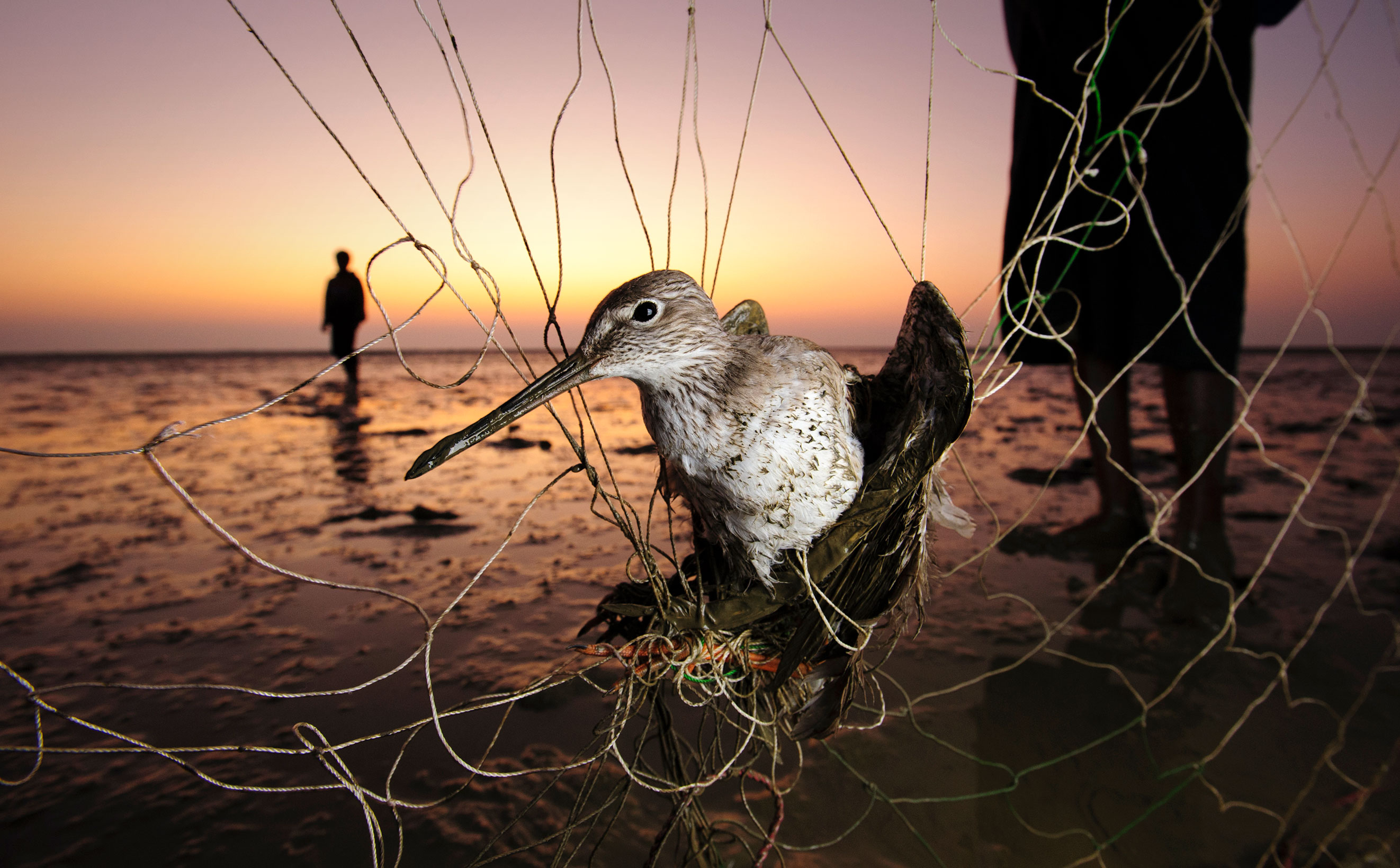
A Migration Haven Becomes a Coastal Hell
For many birds, migration is the most dangerous time of the year, but it has become an especially deadly gantlet for shorebirds. The loss of safe, resource-rich places to rest, refuel, and winter means that increasing numbers of breeding-age adults simply don’t survive the journey, or arrive on the nesting grounds late and in such poor condition that they haven’t the time or energy to breed. Once there, they may find that intensive agriculture has created landscapes unable to support their chicks, or discover they are so out of sync with a rapidly changing climate that their nesting attempts fail year after year. Those with the longest, most dramatic migrations—already delicately balanced between time, distance, weather, food, and physiological ability—are at the greatest and most immediate peril.
The threats are global, and examples abound on nearly every continent. In Brazil, kite-surfing is a booming new adventure sport for tourists that can scatter weary migrant shorebirds from the beaches. In the Caribbean, northern South America, and Asia, poaching and subsistence hunting are probably exacting a heavy toll every spring and fall. Everywhere the ocean meets land, where shorebirds prospect for food buried within sand and mud, sea-level rise is submerging coastal wetlands, and in many places humans are fighting back by armoring the remaining shoreline with rock and concrete. Either way, shorebirds are left with no place to feed.
Few places, however, tie together all the existential threats faced by shorebirds quite like the Yellow Sea. This is the narrow waist of what’s known as the East Asian–Australasian Flyway, or EAAF. Species that winter in New Zealand, Australia, Indonesia, Malaysia, and the Philippines funnel through the hourglass-neck of the Yellow Sea twice each year before fanning out to central and northern Russia, and to the Alaskan North Slope and Mackenzie River delta in the Northwest Territories—a longitudinal span of more than 2,600 miles.
Half a century ago, these migrants could feast on mollusks, worms, and other intertidal creatures along 2.7 million acres of Yellow Sea tidal flats. But since the 1950s, roughly two-thirds of those flats have been destroyed, mostly by “reclamation”—building seawalls, then pumping in tidal sediment to create solid land for agriculture, aquaculture, or industry. Surveys suggest the rate of estuary loss by 2013 was more than 100,000 acres per year.
“It was a coastal hell,” Piersma says of the Yellow Sea. “A couple of years ago, there were dredges everywhere, huge plumes of sediment being pumped inside the seawalls, the smell of oil in the air.”
The results have been devastating for migrant shorebirds. As more and more coastal habitat has been lost, shorebirds have crowded ever more densely into what remains, even as their populations continue falling. There is no buffer left in the EAAF system, Piersma said, gesturing to the Nanpu flats.
“They are squeezed into this place. For a while, we saw the numbers here increase, as the knots and godwits that had used other areas shifted here. It wasn’t a real increase. They simply had nowhere else to go. And since then, the numbers have again declined,” he said.

It’s not just China. The construction of a single, 21-mile seawall at Saemangeum, South Korea, destroyed more than 150 square miles of tidal wetlands on which hundreds of thousands of shorebirds once depended—including 30 percent of the world’s Great Knot population. The winter following the seawall’s completion, scientists with Piersma’s Global Flyway Network surveying color-banded knots in northwest Australia found that 80 percent of the birds that had used the Saemangeum area in the previous seasons had vanished. They estimated that the global population of Great Knots declined by one-fifth directly as a result of this single project.
For species like the Spoon-billed Sandpiper, which may number only a few hundred individuals, or Nordmann’s Greenshank with barely more than a thousand, doom is dangerously close. But even for more abundant birds that use the EAAF, such as Red Knots whose two subspecies likely total 100,000 or more, the precipice is looming. Researchers say the EAAF’s Red Knot population is falling as much as 20 percent a year, and at current rates half the remaining knots will be gone in just three or four years. The same plunge is known to be occurring with Great Knots and Bar-tailed Godwits, while for other species scientists have no hard data but grave concerns. Every indication points to the Yellow Sea as the driver in this freefall; according to Piersma’s research, most of the mortality for Red Knots, Great Knots, and Bar-tailed Godwits occurs during their migration through the Yellow Sea.
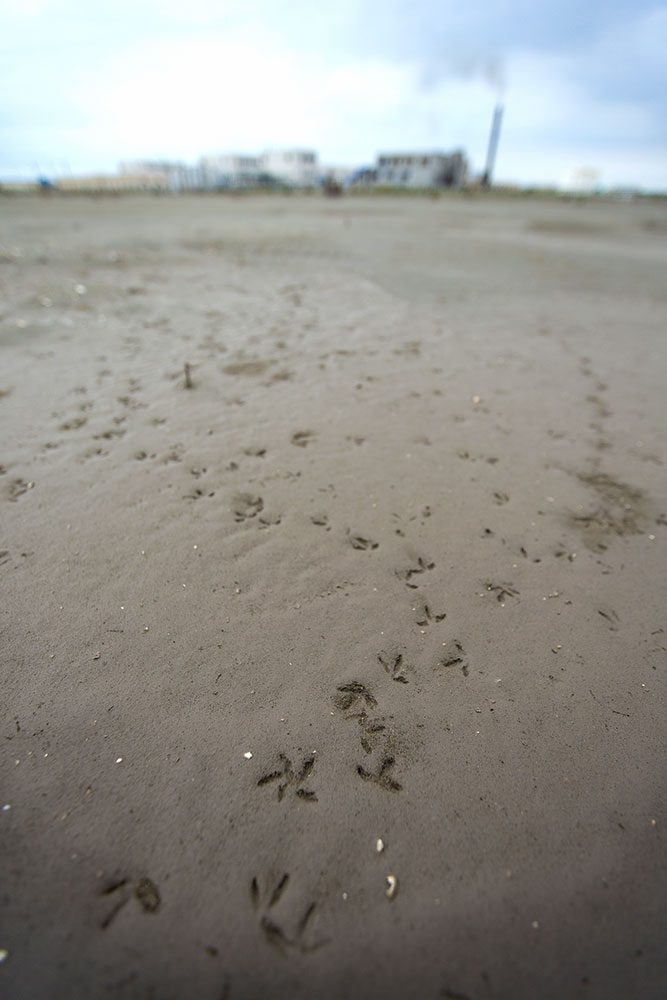
“An enormous conservation intervention is needed to reverse the declines in EAAF shorebirds,” an international team of biologists concluded last year.
Remarkably, such an intervention occurred, in the most dramatic way possible. In January, the Chinese government unexpectedly announced that it was banning all further business-related coastal reclamation, abolishing local control over such projects, and planning to restore tens of thousands of hectares of illegally reclaimed land, mostly on the Yellow Sea, in the next three years. This followed the 2016 release of a blueprint for coastal conservation drafted by the Paulson Institute, a global sustainability think tank founded by former U.S. Treasury Secretary Henry M. Paulson, that has worked closely with the Chinese government on wetlands conservation issues. [Read more in Chinese Government Puts The Brakes On Reclamation Of Shorebird Habitat.]
One conservationist described her reaction to China’s announcement as “stunned joy,” though many are waiting to see exactly how the new policy will be implemented. (For instance, the announcement seemed to leave a large loophole allowing for projects that align with “national policies.”) But Piersma told me that since almost all of the rampant seawalling and dredging thus far has been driven by locally approved demands for industrial, aquaculture, and farming uses, such a ban may have come in just the nick of time for the EAAF’s remaining shorebirds.
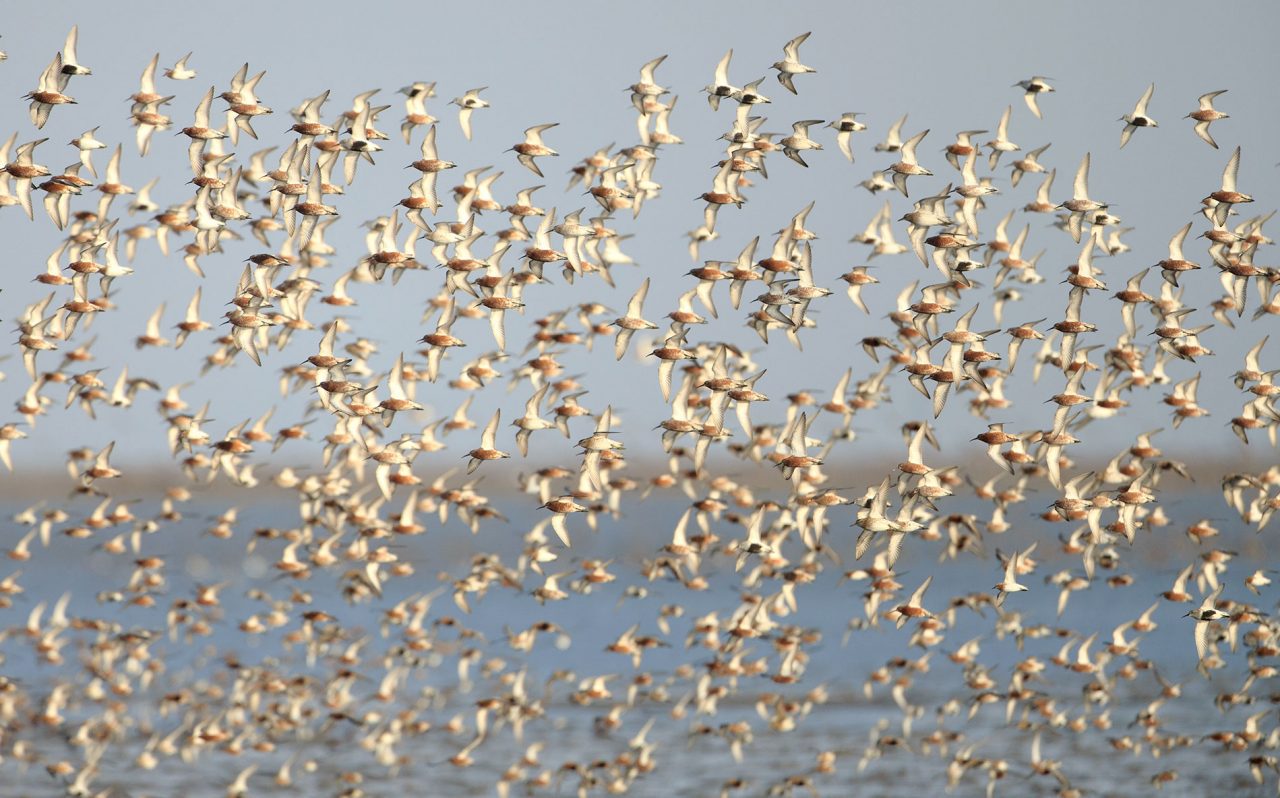
Tidal Habitat Losses Are a Worldwide Problem
Around the world, though, shorebirds continue to lose ground—literally—as wetlands and tidal flats are destroyed and altered. In North America, the long-running International Shorebird Survey has shown that shorebird numbers in general have plunged by half since 1974, with the steepest declines among long-distance, Arctic-nesting species such as Ruddy Turnstones, Red Knots, and Hudsonian Godwits. Whimbrel counts along the mid-Atlantic coast have fallen by more than 75 percent over the past 35 years.
In 1986, conservationists started efforts to protect networks of critical habitat by establishing the Western Hemisphere Shorebird Reserve Network, or WHSRN. Today WHSRN encompasses more than 100 sites that are some of the most important shorebird habitats in the Americas, totaling 38 million acres in 16 countries.
But a WHSRN site designation is just that—a designation of special importance. It does not confer protection or grant any authority over land-use decisions by local and national governments, which do not always make the best management decisions for birds. For example, the Fraser River estuary in Vancouver, British Columbia— where 95 percent of the world’s Western Sandpipers stage each year (along with more than 100,000 Dunlins and large concentrations of Black-bellied Plovers)—is designated as a hemispheric-level WHSRN site, a globally significant Important Bird Area, and is listed as a wetland of international significance under the Ramsar Convention on Wetlands. Yet there are plans in the works to double the size of an existing offshore port and causeway complex that has already altered the ecology of the estuary.
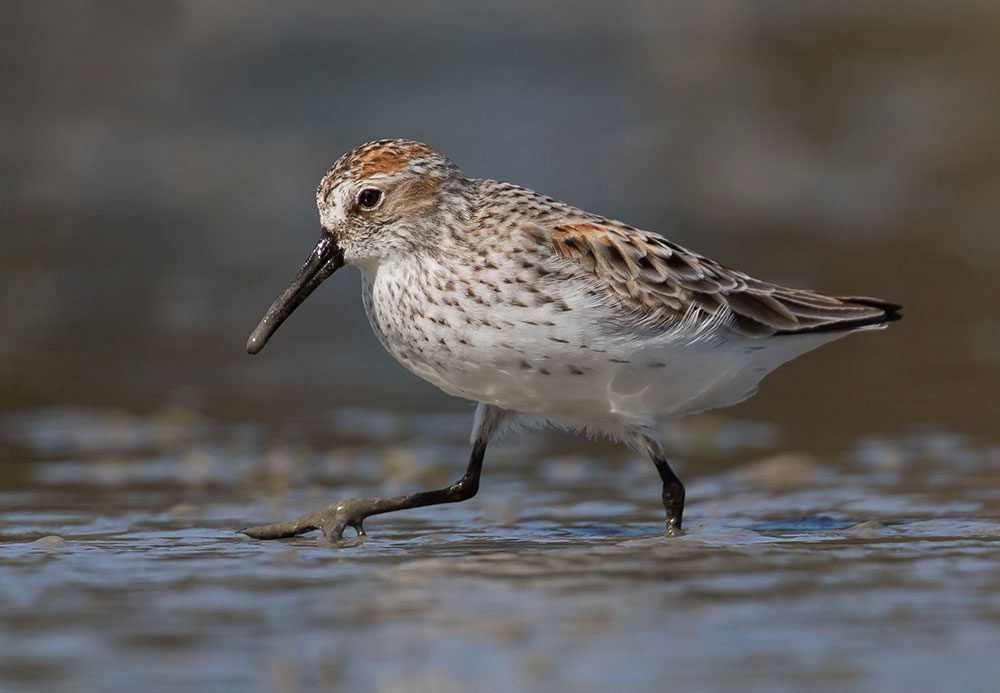
Scientists are still learning even the most basic aspects of shorebird ecology. For instance, the Western Sandpipers that gather on the Fraser River have microscopic fringes along the tips of their tongues, but it was only recently that scientists realized this adaptation allows them to feed heavily on biofilm—the highly nutritious layer of greenish microbial scum that forms on the surface of tidal flats. Canadian researchers have found that only certain areas of the Fraser estuary, where the mix of salt and fresh water is ideal, produce the necessary conditions for fatty acid-rich diatoms that form the biofilms on which the birds are most dependent. How the port expansion will change the dynamics of this delicate system is anyone’s guess, but in February, Canada’s environmental ministry called the consequences for shorebirds “potentially high in magnitude, permanent, irreversible, and, continuous.”
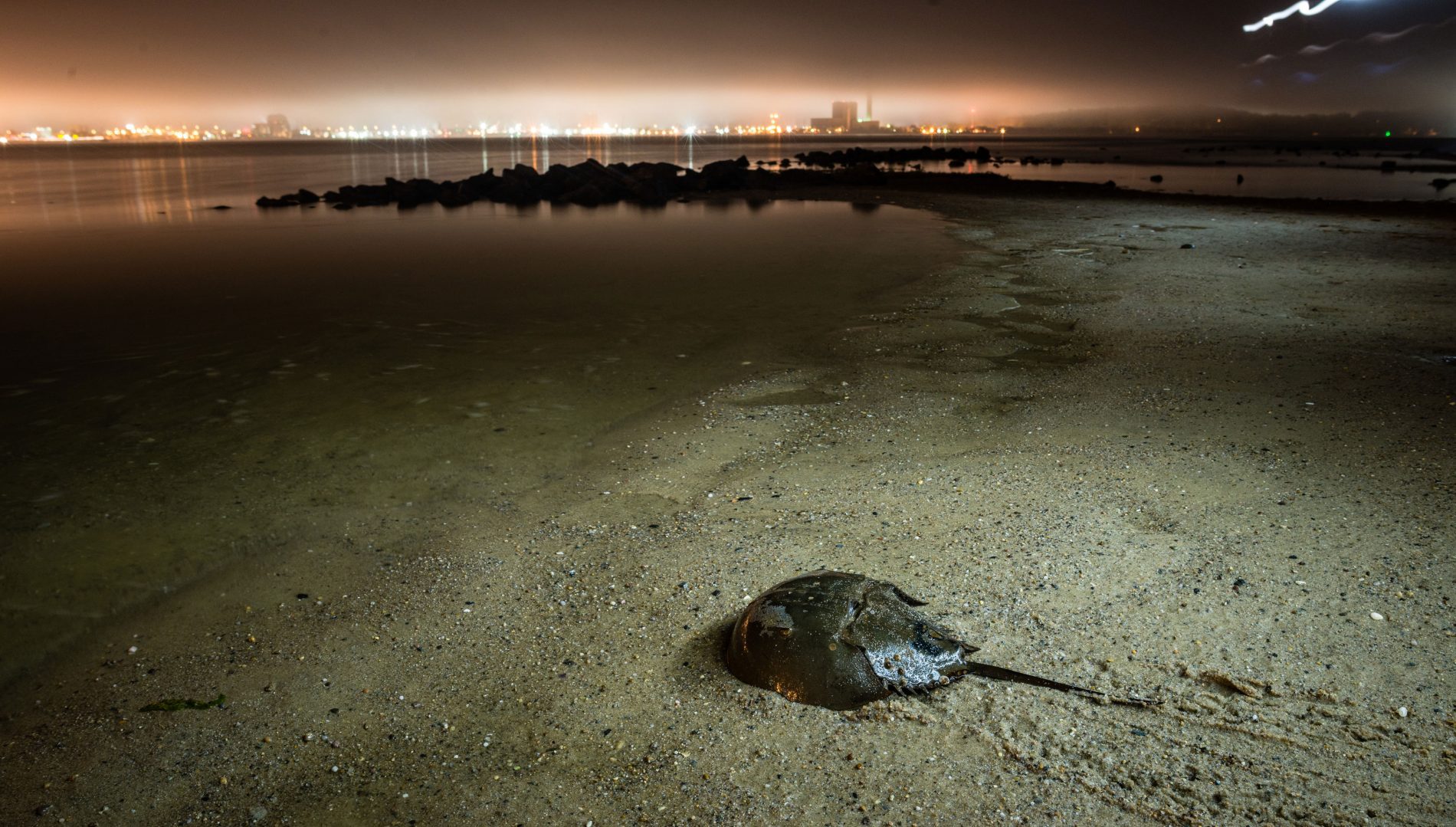
Feast or Famine
Global shorebird migration can be boiled down to two main elements: extraordinary long-distance flights and remarkable food abundance. Remove the food, and the whole system fails.
Horseshoe Crabs in the Delaware Bay
The most notorious example of system failure occurred on Delaware Bay, where beginning in the early 1990s, a new and largely unrestricted fishery for horseshoe crabs robbed Red Knots of crab eggs, a critical resource on their northbound journey from southern South America to the Canadian Arctic. Shorebird numbers plunged; the rufa race of Red Knots dropped so precipitously that in 2014 they were added to the federal endangered species list. Limits on crab harvests were eventually put in place, and for a time it seemed a corner had been turned. Winter knot counts in Chile suggested a modest recovery was beginning. But last winter, roughly a quarter of the knots vanished without explanation.

Horseshoe crabs gather by the thousands to breed in Delaware Bay. Their eggs are a vital food source for migratory shorebirds along the Atlantic Coast. Photo by Wayne Bierbaum via Birdshare. 
Horseshoe crabs have also been a valuable resource for the pharmaceutical industry. About 50,000 horseshoe crabs have died annually from being bled for biomedical use. Photo by Timothy Fadek.
No one’s certain why; some experts believe the fishing industry is finding ways around the loose crab quotas set by federal regulators by catching more crabs in Delaware Bay than permitted, then bringing them to port in other, distant states like New York and claiming the catch originated there. The pharmaceutical industry also puts pressure on horseshoe crabs, collecting some 400,000 crabs a year to extract an enzyme needed to test injectable drugs and medical devices for dangerous bacteria. But the knots may also be feeling multiple effects of climate change. One obvious element is warmer-than-average springs, during which the horseshoe crabs spawn a full month early, so that their eggs are hatched and gone before the shorebirds even arrive.
Habitat, Resources and Climate Change
Climate change has many bullseyes trained on shorebirds. Hurricanes and tropical storms will become increasingly severe as the oceans warm, raising the risks for Whimbrels flying through the western Atlantic Ocean in autumn. Hudsonian Godwits wintering in Argentina could lose vast stretches of the mudflats on which they feed in the next century as the ocean rises. The biggest threat from climate change, though, may be occurring on the nesting grounds, as the seasons shift beneath the feet of migrant birds. In Finland, warmer springs mean earlier mowing on farms, destroying the meadow nests of Eurasian Curlews and Northern Lapwings. And the biggest disconnects are unfolding in the Arctic, where most shorebirds breed—and where, nesting as they do at the very highest latitudes, they have no place to which they can retreat farther north.

Warmer springs in Finland mean farmers mow their fields earlier, which destroys Northern Lapwing nests. Photo by eero salo-oja/Macaulay Library. 
A Eurasian Curlew in Finland. These birds also nest in fields and risk having their clutches destroyed by farmers mowing fields earlier in the season. Photo by José Frade/Macaulay Library.
In 2016, Piersma and a team of scientists showed how warmer summers in Siberia are actually shrinking the Red Knots that breed there, producing chicks with lower body weights and shorter bills. More ominously, given how rapidly this subspecies is declining, they also showed reduced survival rates—perhaps because those shorter bills prevent the knots from reaching highly nutritious mollusks buried just out of reach beneath the sand on their West African wintering grounds. The research team speculated that the cause for the shrinking knots was a timing mismatch in the Arctic; the insects on which the knot chicks feed emerge earlier, and the insects themselves are smaller in warm summers, a double-whammy for hungry shorebirds. (There is evidence to suggest the same thing is happening to Red Knots in Alaska.)
Nathan Senner—a shorebird biologist at the University of Montana, who earned his PhD through the Cornell Lab of Ornithology and conducted postdoctoral research at Groningen under Piersma—has been studying a similar climatic squeeze play involving Hudsonian Godwits. Hudsonian Godwits are among the world’s long-distance migration champions. The population that winters in Tierra del Fuego in Chile, for example, takes off and heads out over the Pacific Ocean, flying 6,600 miles nonstop north, crossing Mesoamerica, and finally making landfall on the Gulf Coast or the central Plains (see a map of their route in our Fantastic Journeys special feature). After a single rest stop, they fly another 2,000 miles or so north to their breeding grounds near Hudson Bay, arriving in the last week of May or early June. But as the climate changes in paradoxical ways, these birds are experiencing seasonal whiplash.
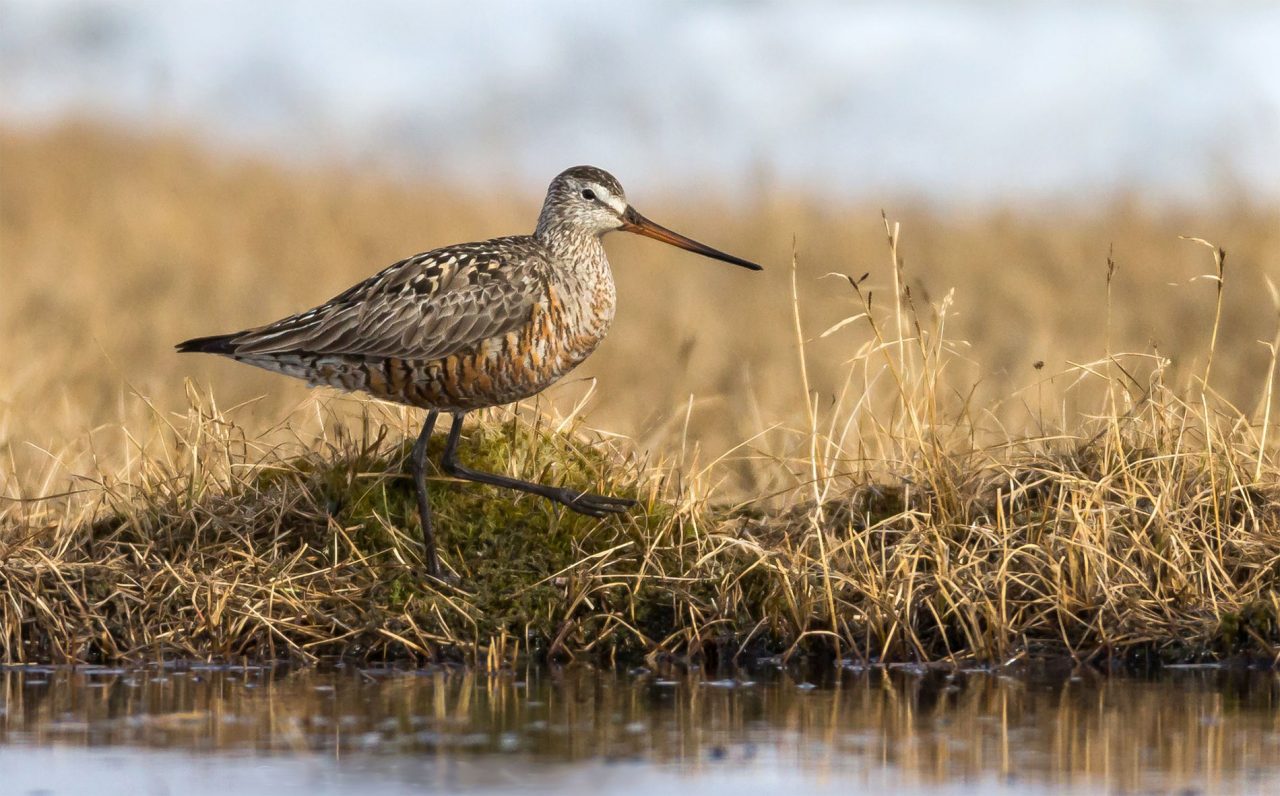
From the Dakotas through the prairie provinces up to Hudson Bay, snow and ice are now lingering later into the spring, preventing the migrants from pushing north as early as they otherwise might.
“The unfortunate thing is that those cooling conditions in May are counteracted by really warming conditions the rest of the summer. June and July are experiencing some of the most drastic warming” anywhere in the North, Senner says.
The godwits are between a rock and a hard place.
~Nathan Senner
As a result, the godwits have to delay their arrival on their breeding grounds until the snow melts, so they get a later start at nesting—but then rapid warming brings out the insect swarms too early. It takes the female godwits about five days to transition from migratory to breeding condition, another five to lay a complete clutch of four eggs, and then three weeks or so for those eggs to hatch. Just as the growing chicks need the most food, the insect hatch has already peaked—leaving the older chicks underfed exactly when their energy demands are highest.
“The godwits are between a rock and a hard place,” Senner says. If they arrive any earlier, they’re going to encounter snow. But if they arrive any later, they’re going to be even more mismatched with the hatch of bugs their chicks rely on for food.
The result? Many years the godwits are unable to breed successfully, with just 6 percent of their chicks making it to adulthood, compared with 30 percent in other populations. Such a low reproductive rate, over time, is a virtual death sentence for the Hudson Bay population.
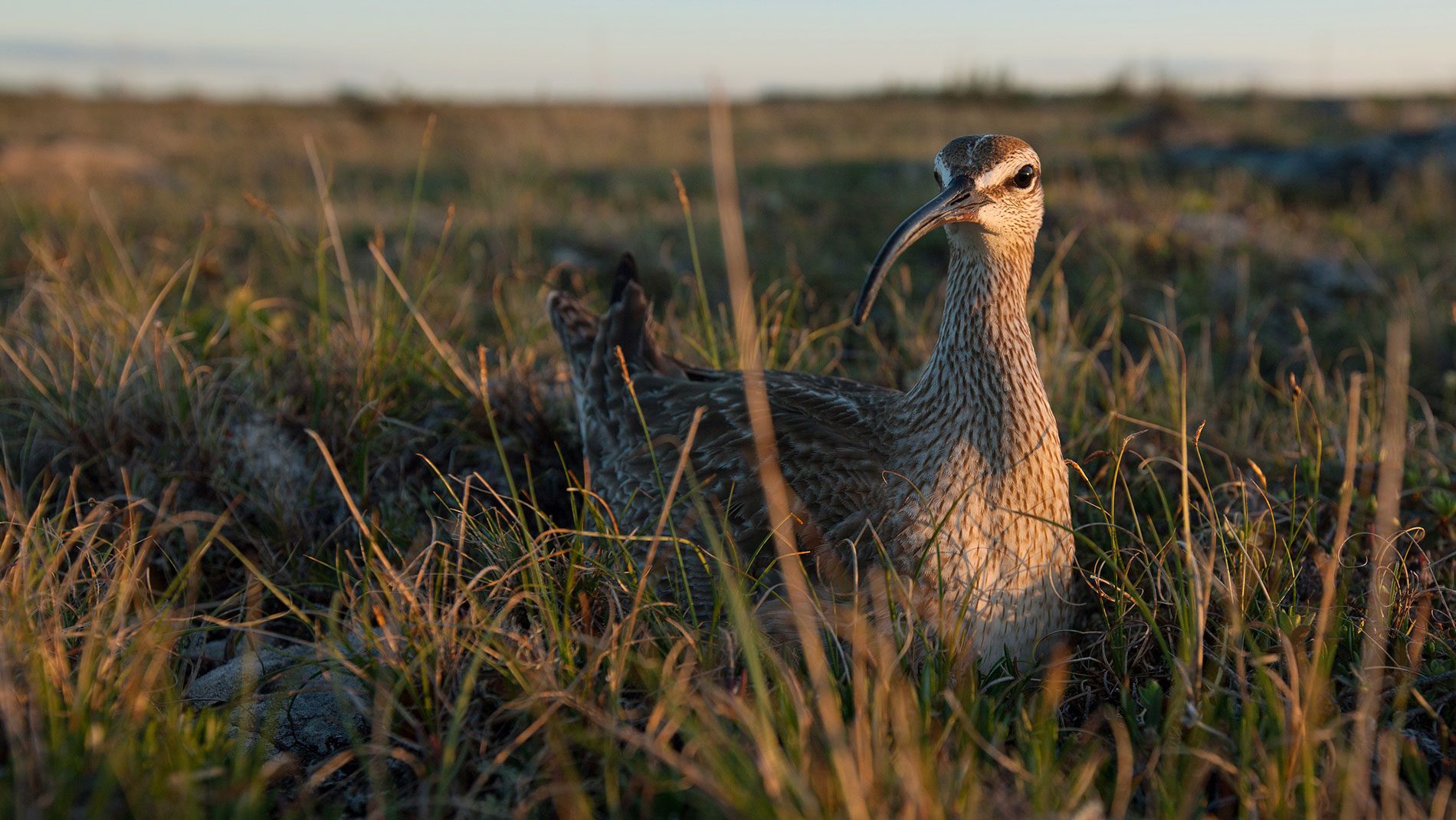
Hunting Shorebirds: A Whimbrel’s Journey
Although many of the problems facing shorebirds are driven by industrialization and climate change, some old threats remain. Along the East Asian–Australasian Flyway, in places like China, Bangladesh, and Myanmar, illegal netting and shooting are a threat, especially to the critically endangered Spoon-billed Sandpiper. However, conservationists are making progress and China seems to be cracking down on poachers.
Shooting is not strictly an Old World problem. At the end of May last year, I joined Bryan Watts and his colleagues from the Center for Conservation Biology at the College of William and Mary. We gathered in late afternoon along Boxtree Creek on the Eastern Shore of Virginia, where saltmarsh tidal flats stretch for miles to the south and east. It was only in the mid-50s, with a biting wind off the water.
“Doesn’t feel much like Memorial Day weekend,” one of the scientists grumbled. But soon no one was paying attention to the temperature, because a big flock of Whimbrels was approaching from the south—about a hundred birds, gaining altitude as they came, the air ringing with their loud, rippling trills, like someone enthusiastically ringing sleigh bells.
“That’s a rally cry,” Watts said. “They’re trying to excite other birds into joining them. Sometimes we’ll see flocks come right up out of the marsh to meet the ones going over.”
These Whimbrels had likely spent the winter on the coast of Brazil or in the Lesser Antilles. Their respite in Virginia is critical; the birds lay on enough fat for their next long flight to Hudson Bay or the Northwest Territories, a nonstop journey of five days.
“The next time they touch land they’ll be in the Arctic,” Watts said, watching them go.
More on Shorebird Hunting in the Caribbean
In 2011, Watts’s team was tracking two satellite-tagged Whimbrels migrating south as they departed the East Coast. The birds each flew through or around a hurricane and a tropical storm—a stunning but not uncommon behavior for these astounding migrants, which use the tailwinds from huge storms on their southbound journey. Having survived the weather, however, the exhausted Whimbrels (nicknamed Machi and Goshen) tried to make landfall on Guadeloupe in the Lesser Antilles—and were immediately shot by gunners in one of the few bits of wetland habitat on that small Caribbean island.
The deaths of these satellite-monitored Whimbrels, which outraged conservationists, dramatically revealed the degree to which migrant shorebirds were still being hunted in parts of the Caribbean and South America, said Brad Andres, national coordinator of the U.S. Shorebird Conservation Plan for the U.S. Fish and Wildlife Service. Although shorebird hunting has long been banned in North America, scientists knew it remained a significant problem on Caribbean islands like Guadeloupe, Martinique, and Trinidad and Tobago, and on the South American mainland in Suriname, French Guiana, and the north coast of Brazil.
On Barbados alone, the annual kill had been estimated at up to 34,000 birds, as many as 19,000 of them Lesser Yellowlegs, the most commonly hunted species in the region. But American Golden-Plovers, Short-billed Dowitchers, Pectoral Sandpipers, and others—including much rarer species like Red Knots and Whimbrels—are also taken, even in the few places where they are technically protected. In Suriname, on the northeastern coast of South America, the annual toll is likely in the tens of thousands of shorebirds, with Semipalmated Sandpipers a common target.
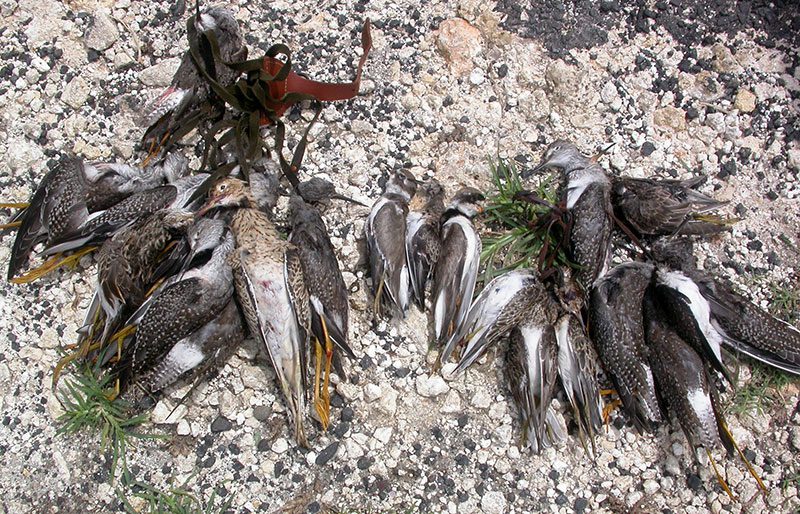
Conservationists were already beginning to assess the impact of shorebird hunting, Andres said, “but with Machi and Goshen getting shot, it pushed everything at lightning speed.” Since 2011, with heightened public attention, some Caribbean countries and territories have tightened rules. In Guadeloupe, where there are nearly 3,000 licensed hunters, there are now seasons and bag limits where there were few before. In Barbados, Andres said weapons and ammunition are getting harder to obtain as the government cracks down on drug smuggling, and hunting is declining. Several of the artificial “shooting swamps”—the primary wetland habitat available for migrants— are now sanctuaries like Woodbourne Shorebird Reserve, or no longer hunted, Andres said.
“There’s actually another shooting swamp that just three months ago sent me a proposal to go to a no-shooting reserve. The big problem now is coming up with money to maintain these sites year after year,” he said, because without management, the manmade wetlands become far less valuable for birds. Pumping water seasonally, controlling weeds and vegetation in a tropical environment, maintaining land leases, and paying staff all amount to at least $50,000 to $75,000 a year, Andres said, a sum comparable to running a similar-sized state or federal wildlife area in the U.S.
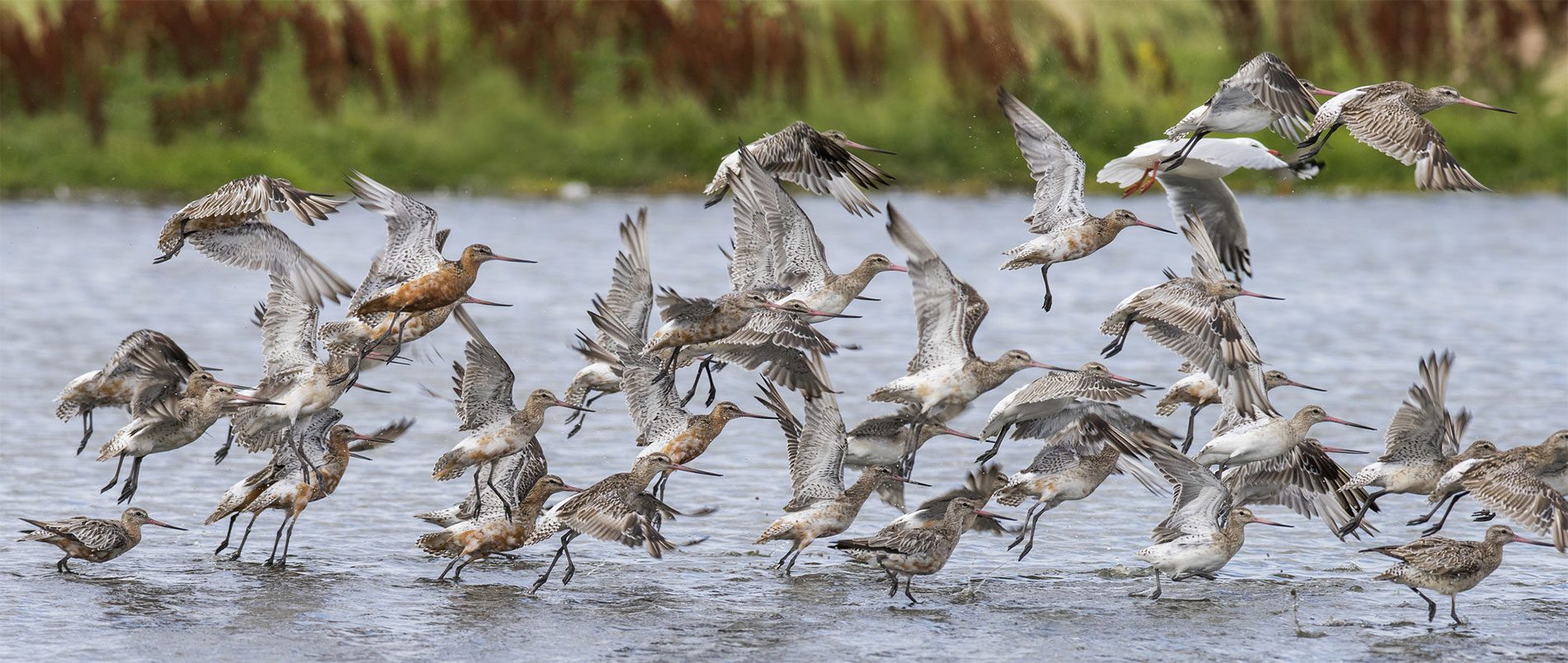
Glimmers of Hope
The situation facing shorebirds today is as bleak as any confronting birds in our lifetimes, but it’s not without some glimmers of hope. For example, while the Hudsonian Godwits of Hudson Bay have fallen out of sync with the seasons, another population Nathan Senner studies—which nests in south-central Alaska—has been able to keep pace with the changing climate, and appears to be stable or perhaps even increasing in number.
The Black-tailed Godwit—an Old-World relative of the Hudsonian, and a species that Senner and Theunis Piersma have studied together—has also shown remarkable adaptability.
Where the entire Black-tailed population historically migrated from the Netherlands to sub-Saharan Africa, many of these godwits now detour to the southern coast of the Iberian Peninsula, where rice fields in Spain and Portugal provide superb winter habitat. Black-tailed Godwits are also incredibly flexible in the timing of their northbound migration, depending on the weather in Europe; an individual may fly north at the beginning of January during an especially mild year, Senner said, or wait until the middle of March the next year if the cold lingers.
“Outside the breeding season, pretty much any way we look, these birds are able to respond to the changes that are thrown at them,” Senner said.
Even in the nesting season, Senner’s and Piersma’s research shows that Black-tailed Godwits can be more adaptable than expected, extending their nesting season as summers in northern Europe have become warmer and wetter. When an unusual spring snowstorm struck the Netherlands in March 2013, the godwits, having just arrived, made an unexpected reverse migration south to escape it, with some birds backtracking to Belgium.
Thanks to this flexibility, Black-tailed Godwits enjoy high adult survival rates. Unfortunately, intensive monocrop agriculture has largely replaced natural meadows on the dairy farms in northern Holland where most of the godwits breed. Early mowing destroys many nests, and those chicks that hatch find few insects to eat in what little foraging habitat remains—which in turn is also taller and denser because of warming summer temperatures. The result has been a steep decline in Black-tailed Godwit populations. Despite their adaptability at other times in their annual cycle, Black-tailed Godwits need humans to make some accommodations in agriculture to ensure godwit survival during the breeding season.
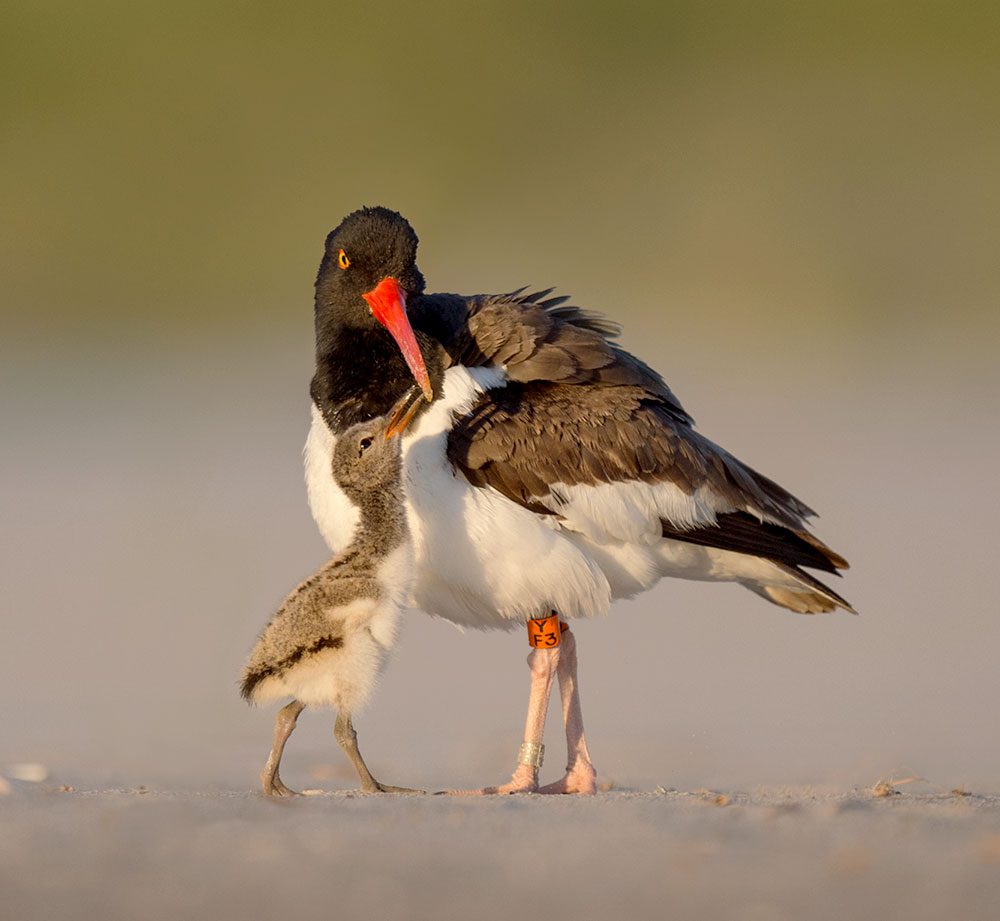
Along the Atlantic coast of North America, humans did accommodate declining American Oystercatchers—and the oystercatchers rebounded. Beginning in 2008, a regional effort by the USFWS, the conservation science nonprofit group Manomet, and more than 30 other conservation groups and agencies along coastal states enacted a two-pronged recovery plan. To minimize human disturbance on the beaches where oystercatchers nest, the agencies managed access by boaters and beachgoers. To minimize predation, project partners installed fencing to keep out skunks, opossums, and other mammalian predators. Ten years later, the American Oystercatcher population has turned around and grown by around 20 percent.
“At a time when populations of most species of shorebirds are declining, the success of the American Oystercatcher recovery initiative gives hope that shorebird populations can be recovered,” said Walker Golder, director of the Atlantic Flyway Coast Initiative for National Audubon.
Now USFWS biologist Scott Johnston is looking to replicate that success by heading up the Atlantic Flyway Shorebird Initiative, a USFWS-led collaborative plan with a goal to increase the populations of 15 shorebird species by 10 to 15 percent over the next decade. Johnston admits that’s an ambitious goal. The oystercatcher plan addressed predation and disturbance, perhaps the easiest threats to mitigate. The broader shorebird initiative must tackle tougher challenges such as habitat loss and climate change.
“Are we going to see huge increases? Maybe, maybe not,” says Johnston, pondering the odds stacked against shorebirds. “But let’s really work on stemming the tide of decreases. In a way, we’re thinking, ‘Not another one on our watch.’”
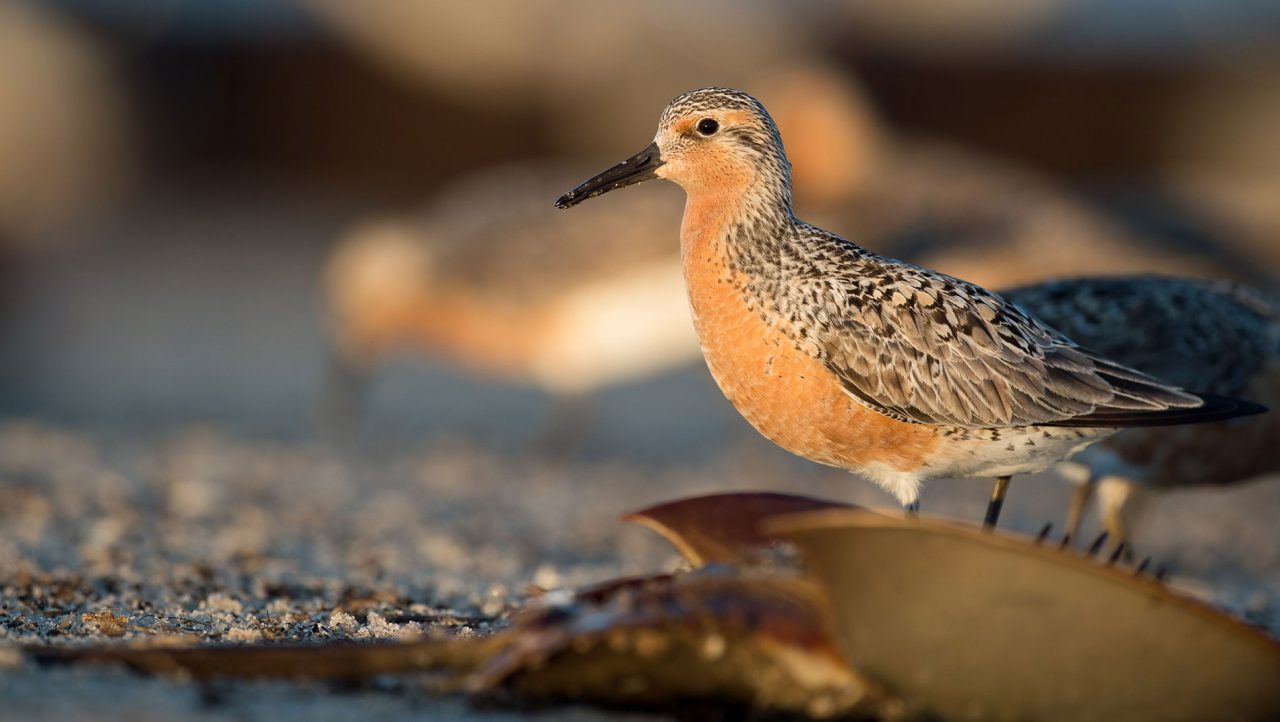
Teams of biologists are now crafting species-specific conservation plans for birds like Red Knots—working to ensure an adequate supply of horseshoe crab eggs in Delaware Bay, for example. In a positive step in that direction, the pharma giant Eli Lilly announced in May it will switch from horseshoe crab blood to a synthetic compound for medical tests, and others in the industry are signaling they will follow suit.
Conservationists are also turning to innovative habitat management. Along the South Carolina coast, the recent expansion of a WHSRN site now includes nearly 120,000 acres of federal, state, and private land. The Low Country coast has many old, privately owned rice plantations that have traditionally been managed for waterfowl hunting, but the USFWS’s Andres says there’s room for more birds in those rice fields.
“There’s a mindset that’s changing,” he says. “The owners are saying, ‘We want more than that. We can do stuff for shorebirds here,’ and still maintain that waterfowl hunting culture.”
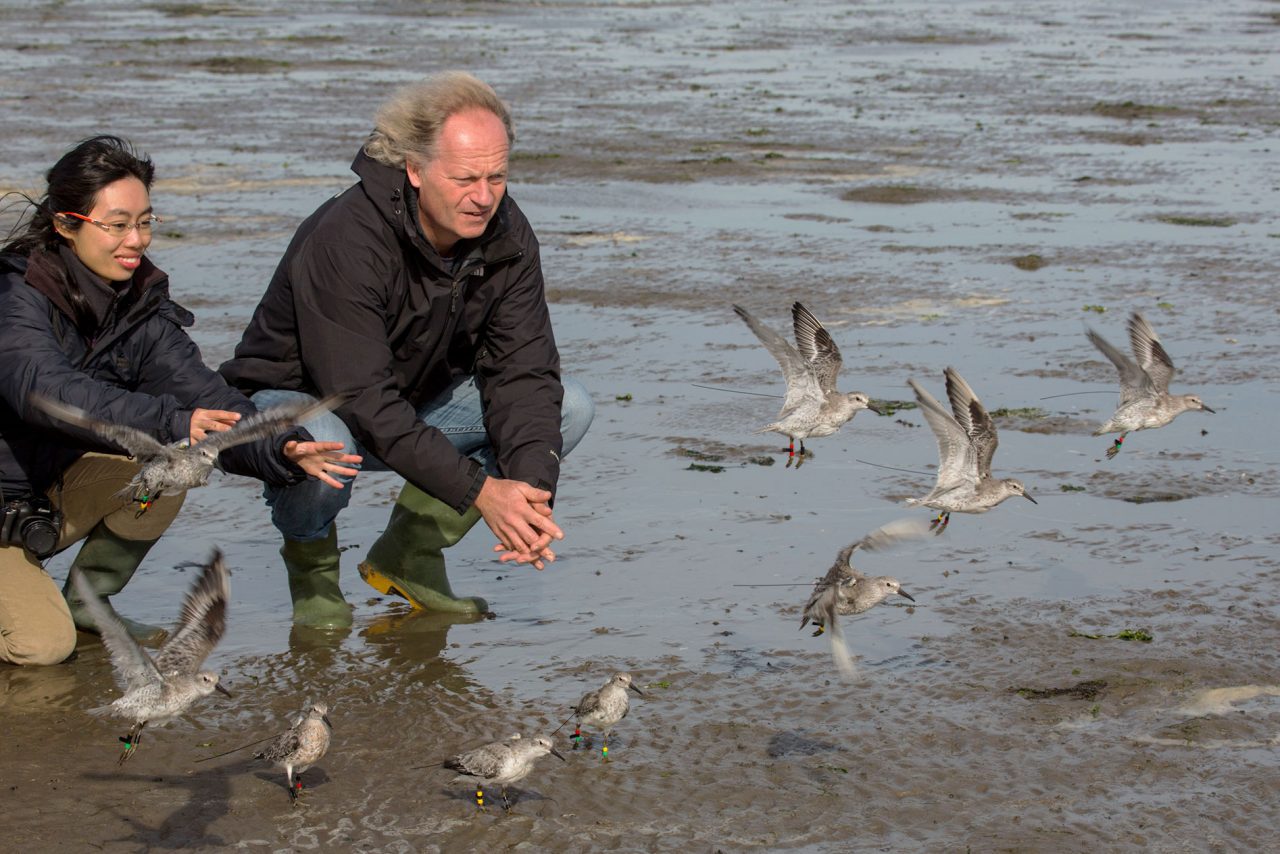
Hope for “Some Sort of Recovery”
Out on the seawall at Nanpu, China, Theunis Piersma straightens his back and stretches. For several hours, he’s been peering through his spotting scope, visually combing through the flocks of shorebirds on the mudflats, jotting down color-band combinations—up to five on a single bird—that allow his team to track their hemispheric movements. The Red Knots with yellow plastic bands over blue were tagged in northern Australia, while those with yellow bands above black were marked in Siberian Kamchatka. Some of the bands (known as flags) have protruding tabs, which can be engraved with an alphanumeric code. I was struggling to distinguish the color of flags on even close flocks, while Piersma and the crew read the engraved codes easily at ridiculous distances.
From over the mudflats comes a long, two-note wail—pooh-weee—repeated after a few seconds, very different from the feeding chatter we’d been hearing all morning.
“You hear that?” Piersma asks excitedly. “That’s the Arctic display song of the Red Knot.” It’s a rare sound here, in temperate latitudes, a sign of the birds’ impending departure for Siberia.
The odds facing these knots—facing all shorebirds—are long ones. But perhaps not as long as they were just recently. If China follows through with its vow to protect and restore its vital Yellow Sea tide lands, the knots named for Piersma, and the dozens of other species that share this flyway, will have a chance. No one’s yet sure how that will play out; not long after my visit, the survey crew learned that a port expansion to support a complex of five new steel mills, which will destroy 20 square miles of mudflat not far from Nanpu, is going ahead as planned. Yet even so, Theunis Piersma says there is more reason for hope than he’s had for years.
“It was very difficult the first couple of years. I was very pessimistic. I thought our job here was to document these extinctions. And there would have been value in that, importance in that.
“But now . . . . ” the 60-year-old Piersma trails off for a moment, looking out at the hordes feeding in the distance. “Now, I hope I have enough life left to see some sort of recovery.”
Pulitzer-nominated author Scott Weidensaul has written more than two dozen books about natural history, and is a frequent contributor to Living Bird.

All About Birds
is a free resource
Available for everyone,
funded by donors like you
American Kestrel by Blair Dudeck / Macaulay Library
